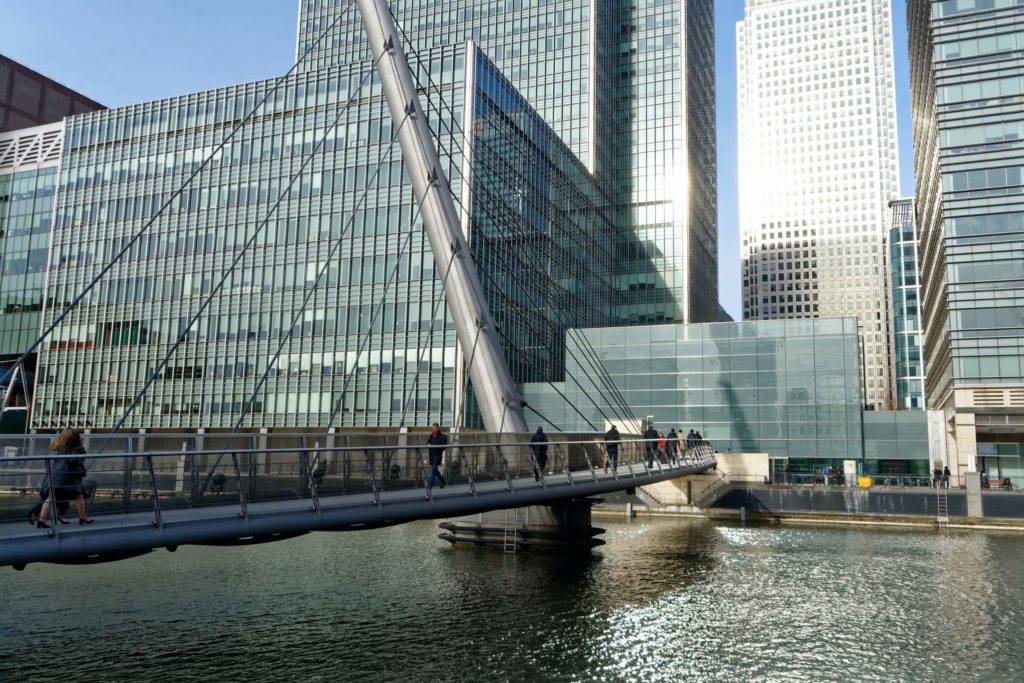The Rise Of Healthy Buildings & Clever Wellness Tech.
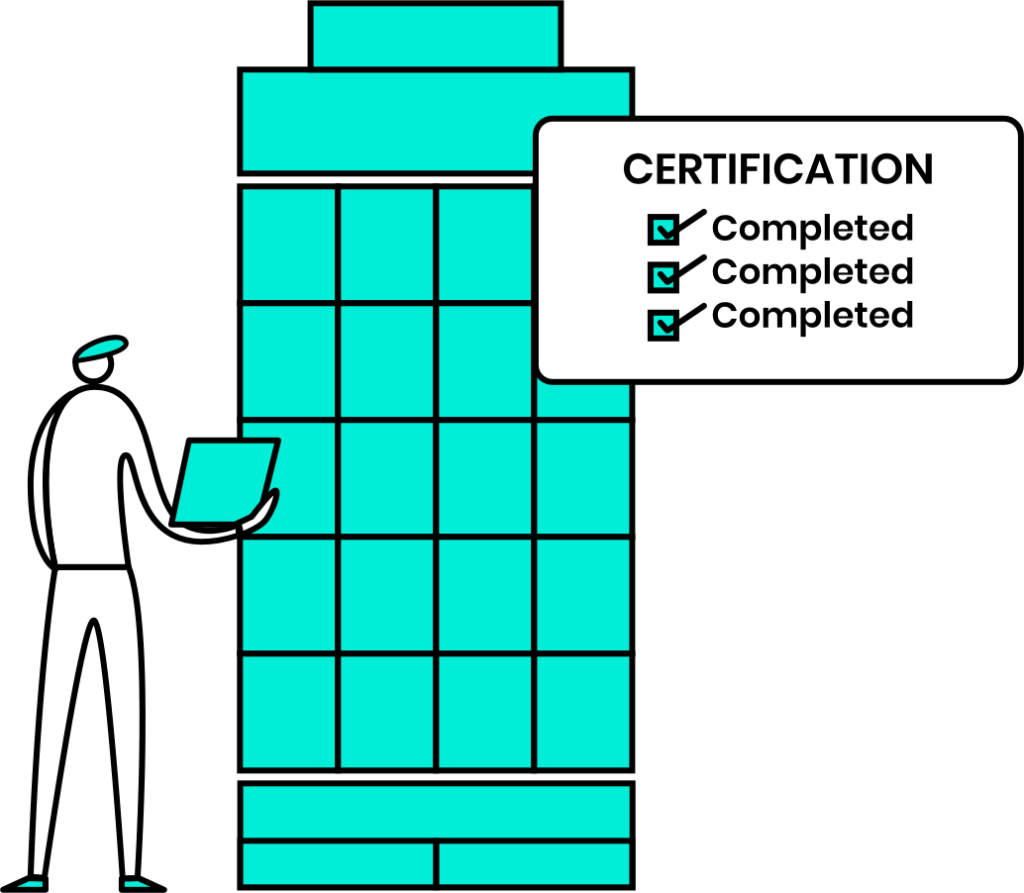
So where to from here when it comes to sustainable building certifications (healthy buildings)? The next logical step has to be prioritising occupant health and wellbeing as a building standard. And when we understand the massive impact this can have on business, our communities, and life in general, it doesn’t take much convincing. Creating awareness and making changes around the role that buildings and public spaces play in our health and wellbeing is just the right thing to do for the greater good. But in this instance, the right thing to do is also the smart business thing to do. For investors, portfolio owners, real estate owners and operators, asset managers, companies, and the like, investing in occupant wellbeing is good for the bottom line. Let’s look at the benefits associated with healthy buildings, and the role that technology plays in helping to achieve some of these goals simply and cost-effectively.
Healthy Buildings Certification In 3 Questions:
- Why does it matter?
- Which certification is best?
- How can fitness and wellness technology help?
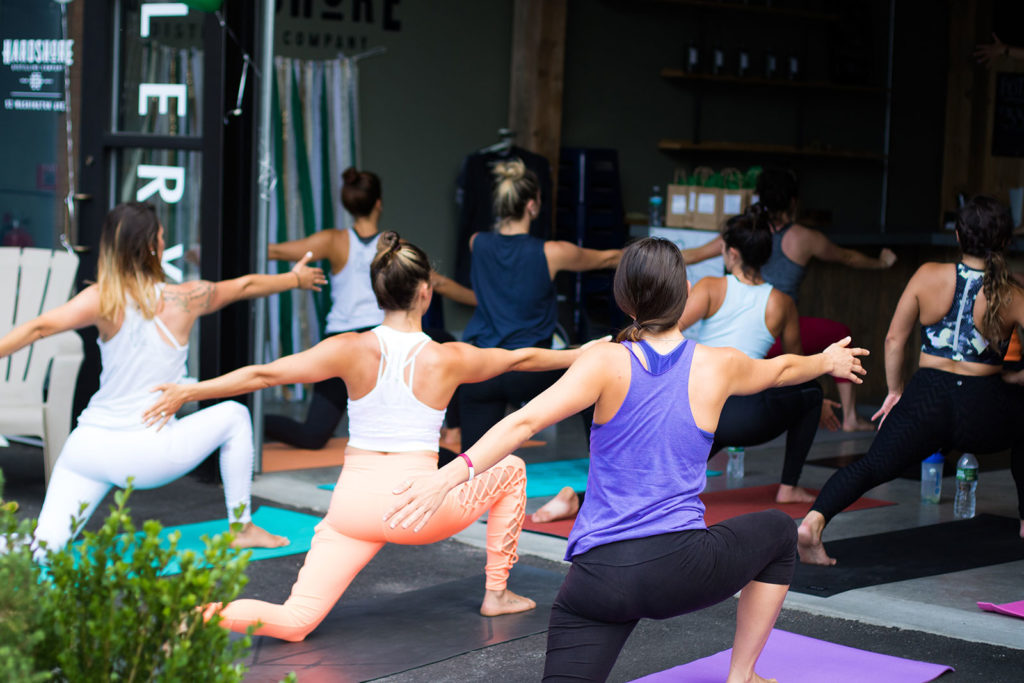
Why Does Healthy Buildings Certification Matter?
In 2017, the global wellness and real estate sector was estimated at $134 billion and is projected to grow to $198 billion in 2022.
– (Global Wellness Institute (2018): “Build well to live well: Wellness lifestyle real estate and communities”)
Better ESG Ratings
ESG (Environmental, Social, and Governance) metrics are becoming an increasingly valuable part of the investment process. Investors are using this data to gain a better understanding of the companies they want to invest in, and to better identify material risks and growth opportunities, understanding that these issues affect the long-term performance of their investments.
An article by simply sustainable states that,
Companies that score well on ESG metrics are believed to better anticipate future risks and opportunities, be more disposed to longer-term strategic thinking, and focused on long-term value creation.
We have seen a boom in ESG investments in recent years. In Europe in 2018, the total assets committed to sustainable and responsible investment strategies stood at a remarkable 49%. There was an 11% increase between 2016 and 2018, and this trend is set to continue.
Nowadays, issues related to occupant wellbeing are becoming a vital part of these ratings. The social section focuses on the consideration of people and relationships. Things like customer satisfaction, employee engagement, community relations, human rights, and health and safety. Also, managing risks involved with the scarcity of skilled labor through employee recruitment and retention initiatives, and labor relations issues such as working hours and minimum wages.
In 2006 the US Courts of Appeals ruled that there was a case to answer bringing the area of a company’s social responsibilities squarely into the financial arena. This area of concern is widening to include such considerations as the impact on local communities, the health and welfare of employees and a more thorough examination of a company’s supply chain.
– (Wikipedia)
If more investors are using ESG ratings as an important part of their investment strategies, then a poor rating can be significant. And if occupant health and wellness means better ESG scores, then it’s good for business.
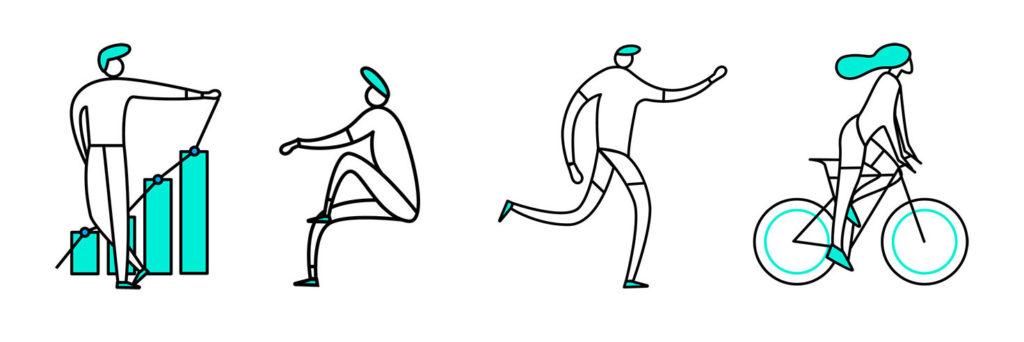
Employee & Tenant Retention
Employee retention is a huge issue for some stakeholders. In some cases, businesses are battling a turnover rate of 120% every year. Focussing on health and wellness strategies to keep employees and tenants engaged, happy and productive are vital for solving this costly issue.
It is important to create spaces that people actually want to be in if you are going to remain relevant and competitive now and in years to come. Just look at Moskowitz’s list of the Fortune 100 Best Companies to Work For. It has not only become an important indicator for employees, but companies are catching up and beginning to compete for a place on the list. Having this status helps businesses to recruit the best workforce, as well as having a powerful impact on company values.
It has been proven over and over that employee wellbeing drives profits. Happy, engaged people are more productive and show a greater commitment to quality and safety.
In an article discussing employee engagement as a business strategy, Gallup states that:
highly engaged business units realize a 41% reduction in absenteeism and a 17% increase in productivity. Engaged workers also are more likely to stay with their employers. In high-turnover organizations, highly engaged business units achieve 24% less turnover. In low-turnover organizations, the gains are even more dramatic: Highly engaged business units achieve 59% less turnover. High-turnover organizations are those with more than 40% annualized turnover, and low-turnover organizations are those with 40% or lower annualized turnover.
In International WELL Building Institute’s webinar on elevating human health and well-being across the investment and operating landscape, guest speaker, Angeli Stirbei (Prologis), talks about how strategies that invest in and focus on human health and wellbeing in buildings and the surrounding communities can affect all the stakeholders (employees, tenants, the community, etc.) as well as proving to be a significant benefit to investors. She says,
How we benefit from that – we’re able to attract and retain our customers. If we’re a long term partner and not just a landlord, we can move that conversation further along with our customers, and really make an impact to their bottom line and our bottom line. And if we’re able to do that then we’re able to positively affect the bottom line of our funds and our investors. And so to us, the whole natural cycle ties in very closely together.
In fact, the Prologis PARKlife initiative is a great example of how a company has made the wellbeing of people and community a major focus in their business strategy. Creating spaces where people want to be, where they can thrive, and where they can benefit from a healthy support system, puts this company ahead. And it’s working for them.
Strong Leadership
Change is a constant. Sometimes we have time to prepare for it, but there are times (like in the case of our current pandemic) when we don’t. It’s in times like these that we need to be prepared, resilient, and ready for the recovery process. And this is only possible through powerful leadership that looks ahead and stays ahead of the pack in innovation and strategy that is future-proof.
It would be foolish to ignore the data. Leaders in this industry must have a plan and a culture that supports health and wellbeing. To be resilient. To be relevant. The industry, the community, people, need investors that are building with a consciousness for human health and wellbeing, creating value instead of adding risks and costs, and setting themselves up to positively respond to changing landscapes.

Build trust
Healthy building ratings and certifications make it possible to show tenants what is being done and how it’s being done. To make them feel safe and confident to be there. For them to trust that the right measures have been taken to help them feel safe, happy, healthy and engaged in the building or space they’re in.
Prioritise health
It is more evident, now more than ever, that our health is affected by the way we operate within the buildings we inhabit. Buildings must prioritise occupant health and well-being. Having an intentional health process and a general culture of health can set us up to be prepared for, and handle, issues that may present themselves suddenly.
Matthew Trowbridge, MD MPH, says,
We envision a high performance company that’s bragging to its investors about its role in whatever the most important public health issues of the day are, they show how their processes are thinking about their assets as part of that solution. And then I think there’s a risk reduction bottom line argument of ‘we’re also ready for an exogenous, unexpected health stressor.’ Issues will come along, that you don’t expect, and a set of specific strategies won’t save you. The only thing that will save you is having a culture of health.
– (Excerpt from webinar – Elevating human health and well-being across the investment and operating landscape)
In this same discussion on elevating human health and well-being across the investment and operating landscape, Jason Hartke (PHD, executive vice president of advocacy and & policy at IWBI) says,
Investing for health is not only a key competitive advantage for organisations around the world, but also THE key to stronger and more vital and more equitable communities
Higher ROI
In a building’s life cycle, the majority of the costs revolve around personnel, not real estate. Building occupants are valuable. It makes sense that investing in people pays off. Some businesses may see their significant return on investment in improved employee productivity levels and less absenteeism. Others see less employee turnover as they attract and retain better quality talent. Some see improvements in better leasing rates and sales. Any way you look at it, happy people equals happy profits.
Well certification is showing results for this London company:
Cundall London demonstrated a positive ROI outcome from WELL within three months merely by calculating their reductions in sick leave and attrition without any accounting for all the other benefits.
– (Alan Fogarty, Sustainability Partner, Cundall.)
Harvard researchers report that for every dollar spent on employee wellness, medical costs fall $3.27 and absenteeism drops $2.73, a 6-to-1 return on investment.
– (Work Design Magazine)
Healthy Buildings: It’s The Right Thing To Do
Because investing in occupant health and wellbeing should be best practice.
Healthy building certifications are set to become the new normal. In the current global pandemic we face, it is impossible to ignore the need for a deeper focus on human health and wellness in the spaces we inhabit.
Third-party healthy building certifications like WELL, Fitwel and LEED are becoming increasingly more sought after, and will likely become standard for builds moving forward.
Which Healthy Buildings Certification Is Best?
Healthy building certification gives a competitive edge, is a selling point for tenants, and is a symbol of sustainability achievement and leadership. Let’s look at some of them in more detail:
Fitwel
Fitwel is a widely used certification program in the healthy building movement. Fitwel Has a strong focus on occupant health. The Centers for Disease Control and Prevention (CDC) is a research and evaluation partner for Fitwel.

The Fitwel Standard can be applied to existing and new buildings, from small projects to large scale development.
Fitwel’s scorecards are made up of a number of evidence-based design and operational strategies that improve on a range of health behaviours and risks within a building. Each of these strategies have unique point allocations. The more evidence provided on a demonstrated impact on occupant health, the more points can be won.
Fitwel’s 7 health impact categories include:
- Impacts surrounding community health – Strategies that impact surrounding community health broaden the impact of the project past the health of on site occupants, reaching those who live, work, play, or learn in the neighboring areas.
- Reduces morbidity and absenteeism – Strategies that reduce morbidity and absenteeism promote decreased rates of chronic disease and mental health conditions, reductions in disease transmission,and fewer missed days of work.
- Supports social equity for vulnerable populations – Strategies that support social equity for vulnerable populations ensure that a range of populations, including children, elderly, disabled, or socio-economically disadvantaged persons have increased access to health-promoting opportunities whether through universal accessibility, pricing incentives, targeted amenities, or pedestrian-focused environments.
- Instills feelings of wellbeing – Strategies that instill feelings of well-being promote inclusion, relaxation, and perceptions of safety, through rejuvenating and clean spaces, an enhanced connection to nature, and opportunities for social engagement.
- Enhances access to healthy foods – Strategies that enhance access to healthy foods provide occupants with expanded availability to fruits, vegetables, and other nutritious food options by diversifying the outlets and sources of healthier food options, promoting healthier choices,and reducing cost of healthier options through pricing incentives.
- Promotes occupant safety – Strategies that promote occupant safety decrease risk of crime and injury, protect bicyclists and pedestrians from vehicular traffic, and increase stair safety.
- Increases physical activity – Strategies that increase physical activity incorporate opportunities for movement into everyday life whether through encouraging active transportation, promoting stair use, or expanding access to indoor and outdoor fitness areas and equipment.
An article by GRESB shows a helpful comparison between Fitwel and Well. Let’s look at some of the main points as they apply to each program:
Cost
The total certification cost for Fitwel is much lower than the others, which makes this option very attractive for those looking for a cost-effective and simple way to get started. This program assesses fees based on the size of the building, so it’s attainable for both small and large-scale projects.
Ease Of Use
Fitwel is designed to be both easy to implement and to document. This system also offers some extra flexibility as there are no prerequisites. Fitwell is not trying to impose extra barriers, but rather help fund owners to make these healthy changes simply and effectively. However, there are some that view this as too easy for some properties.
Compatibility With Existing Building Portfolios
Fitwel’s healthy building strategies are designed to be scalable and can be replicated over an existing building portfolio. It is well suited for existing buildings, providing opportunities to connect with facility managers around areas of health and wellness in the facilities they oversee.
Onsite Validation
Fitwel does not require onsite verification.
Contribution to GRESB scoring
Fitwel provides opportunities for higher GRESB scores.
LEED
LEED (Leadership in Energy and Environmental Design) is a globally recognised green building certification system that provides a framework for healthy, highly efficient, and cost-saving green buildings.

WELL
WELL provides a detailed framework for promoting health and well-being in building projects. The Green Business Certification Incorporation (GBCI) certifies the WELL Building Standard and also manages the LEED rating system. WELL and LEED work well together.

WELL Certification can be achieved by earning points based on performance outcomes for various policy, design and operational strategies. There are four certification levels: Bronze, Silver, Gold or Platinum.
WELL certification is based on 10 main concepts:
- Air – The WELL Air concept aims to achieve high levels of indoor air quality across a building’s lifetime through diverse strategies that include source elimination or reduction, active and passive building design and operation strategies and human behavior interventions.
- Water – The WELL Water concept covers aspects of the quality, distribution and control of liquid water in a building. It includes features that address the availability and contaminant thresholds of drinking water, as well as features targeting the management of water to avoid damage to building materials and environmental conditions.
- Nourishment – The WELL Nourishment concept requires the availability of fruits and vegetables and nutritional transparency. It encourages the creation of food environments, where the healthiest choice is the easiest choice.
- Light – The WELL Light concept promotes exposure to light and aims to create lighting environments that promote visual, mental and biological health.
- Movement – The WELL Movement concept promotes physical activity in everyday life through environmental design, policies and programs to ensure that movement opportunities are integrated into the fabric of our culture, buildings and communities.
- Thermal Comfort – The WELL Thermal Comfort concept aims to promote human productivity and provide a maximum level of thermal comfort among all building users through improved HVAC system design and control and by meeting individual thermal preferences.
- Sound – The WELL Sound concept aims to bolster occupant health and well-being through the identification and mitigation of acoustical comfort parameters that shape occupant experiences in the built environment.
- Materials – The WELL Materials concept aims to reduce human exposure, whether direct or through environmental contamination, to chemicals that may impact health during the construction, remodeling, furnishing and operation of buildings.
- Mind – The WELL Mind concept promotes mental health through policy, program and design strategies that seek to address the diverse factors that influence cognitive and emotional well-being.
- Community – The WELL Community concept aims to support access to essential healthcare, build a culture of health that accommodates diverse population needs and establish an inclusive, engaged occupant community.
Cost
The total certification cost for Well is much higher than Fitwel. There are additional costs for the required onsite performance testing, and the consulting fees can be up to twice as much as they are for Fitwel. This higher cost is the reason WELL is perceived as the more high-end option on the market at the moment.
Ease Of Use
The WELL program is a lot more complex, with a lot more documentation and some prerequisites.
Compatibility With Existing Building Portfolios
WELL works for both new projects and existing buildings, but is generally better suited for newly designed buildings.
Onsite Validation
WELL requires an onsite visit by an approved WELL assessor. This includes visual inspection and targeted performance testing for specific items. This onsite validation process provides additional assurance for asset owners.
Contribution to GRESB scoring
WELL also provides opportunities for higher GRESB scores.
This sounds like it’s going to cost money and a lot of management.
Yes. There are costs involved. And it may seem like a lot to manage and roll out. But as we’ve already established, the investment is worth it. Fortunately, there is a lot of development happening around wellness-specific technology that can support the roll out, management and tracking of these initiatives, and streamline the process in a simple and cost-effective way.
Here it becomes evident that a fitness-focussed wellbeing app could be a powerful tool to assist the rollout and achievement of a large portion of these healthy building goals; specifically those aimed at occupant movement, mental health, nourishment, health, wellness, and community.
How Fitness & Wellness Technology Can Help To Achieve Occupant Wellness & Healthy Buildings Goals.
A lot of topics related to the health and well-being of the occupants are not directly dependent on the design of the building, but are more relevant to the management of the building and services provided within the building.
– (MDPI review – “Comparison of health and well-being aspects in building certification schemes”)
This is where fitness, health and wellness technology can help. Save time, save money, automate management processes, track results, and show evidence of the desired impact.
- It establishes a culture of health and drives engagement.
- It promotes company-wide exposure and fast roll out to all parties.
- It’s fun, engaging, and builds community interaction.
- It’s accessible to everyone.
- It has no set up costs and can be adopted immediately.
- It provides regular reporting to monitor progress, assess engagement, and streamline the management process.
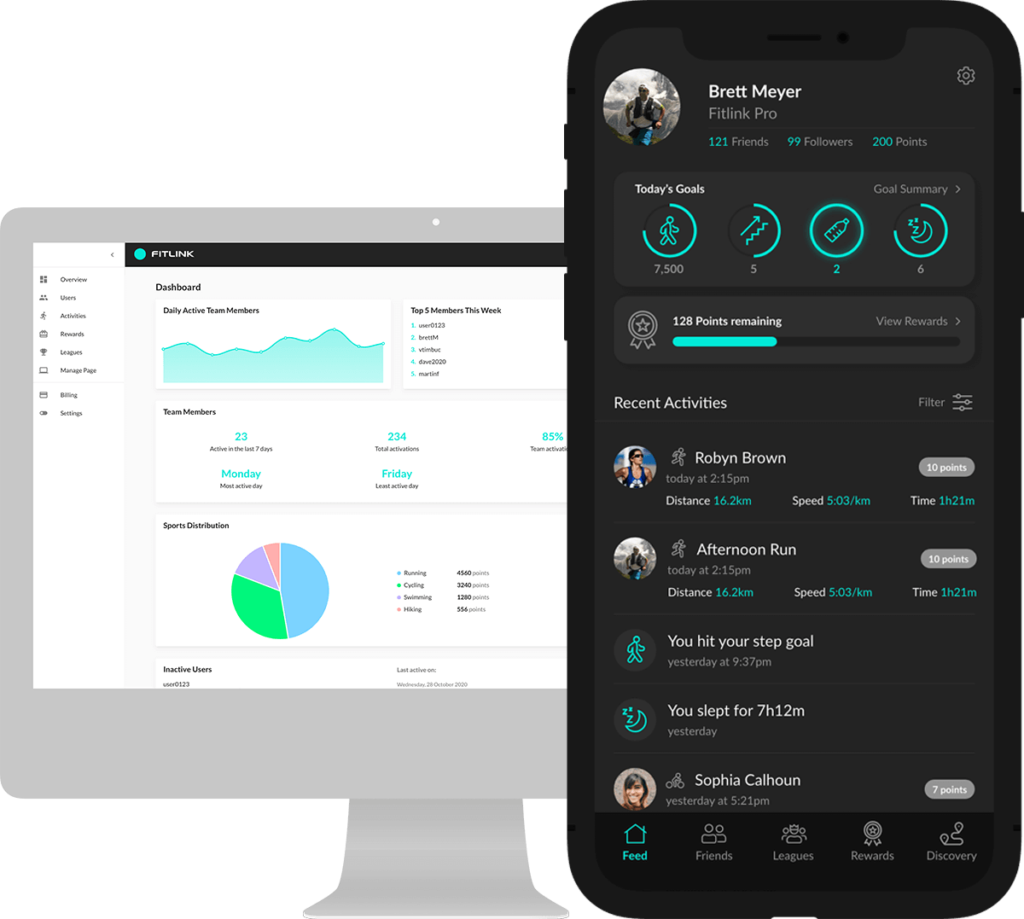
One great example is Fitlink: an evidence-based app and software solution that is designed to help asset owners achieve these healthy occupant goals. And yes. We built it. Because we know it works.
Fitlink is a fitness-focused occupant wellbeing platform that motivates and rewards people for making healthy choices. Management gets a dashboard to manage and monitor the campaign and users get a slick app that connects to their own activity trackers. It’s a modern and cool approach to occupant wellness.
Let’s look at some of the ways this app can address several Fitwel and WELL criteria for occupant wellness.
Physical activity and movement
Fitlink promotes physical activity in everyday life, from active travel, to taking the stairs and expanding the use of indoor fitness areas, every movement counts. The app sets challenges, motivates people to move more, and rewards users for any physical activity goals achieved.
Research performed by the WHO identified physical inactivity as one of the leading risk factors for global mortality and it consequently published recommendations for how to increase physical activity, called The Global Recommendations on Physical Activity for Health. The role of buildings in a built environment is significant, as their design can greatly contribute to the promotion of human physical activity. For example, a study conducted by Bullock et al showed that bike-sharing schemes had several benefits, like journey time savings, health benefits and reductions in motor vehicle use or similar, and the use of bikes could be easily promoted by building design. The proximity of green spaces can also increase the physical activity of the occupants. Another possibility is the promotion of walking inside the building, integration of active furnishing, incentives encouraging greater levels of physical activity, etc.
– (MDPI review – “Comparison of health and well-being aspects in building certification schemes”)
Feelings of wellbeing and mental health
The app also tracks sleep and mindfulness. Users can achieve goals of relaxation and rejuvenation, gain points for taking mindfulness moments and get motivated to get outside, breathe clean air, and connect to nature. It also facilitates a general feeling of wellbeing by getting occupants to connect with others through shared fitness and wellness challenges and events.
State of mind and human physical health are inextricably connected. Each environment that is able to support a healthy mental state can offer significant psychological and also physical benefits for the occupants.
– (MDPI review – “Comparison of health and well-being aspects in building certification schemes”)
Reduced morbidity and absenteeism
Healthy people means less sick days. The app guides and motivates people with fun and practical ways to get active and achieve simple, everyday health goals. This helps occupants to stay engaged, feel better and become more productive in everyday tasks. The result of this is an engaged community that is happy and generally healthy. With the detailed analytics and reports, managers can also track improvements, identify weak spots, and continue to drive engagement and wellness results.
Water intake and nourishment
Fitlink works alongside health conscious reward partners to provide users with things like discounts on good food options in the building or at local outlets, helping them to have easier, more cost-effective access to healthier choices. In addition, the app provides a healthy food map for discovering these healthy food outlets in the building or in the local area. The app also tracks water intake and can be used as a tool to encourage more water drinking and direct occupants to clean water stations around the building.
For healthy building certifications, promotion of healthy eating habits and raising awareness about unhealthy food are also rewarded. Besides the food provided inside the building, the certification scheme also evaluates the access to farmers markets, the proximity of other stores offering healthy and fresh food, and the promotion of consumption of fruit and vegetables.
– (MDPI review – “Comparison of health and well-being aspects in building certification schemes”)
WELL evaluates the promotion of using drinking water inside a building.
Community
The app can be used to encourage and monitor the use of a building’s gym or designated fitness and wellness areas, to reward people for taking classes on the property where other community members can also participate, promote exercise and active travel to and from the building, and more. Create leagues and challenges where users can interact with one another and create a truly social, active, thriving culture. It acts as a tool to help build a culture of health and provide everyone with the motivation and opportunity to participate, engage and be rewarded for it. Camaraderie, a feeling of wellbeing, and healthy, active communities are the natural result.

Wellness Works.
So Does Great Tech.
The fact is, healthy buildings are fast becoming the new normal, and we must keep up. Thankfully, third party healthy building certifications are providing us with solid foundations to build on, and boldly leading us in the direction of happy, healthy, thriving communities that live better and feel their best. And it’s clever, innovative technology that is a powerful partner in this endeavour, to connect people, drive engagement, and achieve occupant health and wellness goals in an attainable, easy to manage, cost-effective way.
Want to discuss how Fitlink can work for your healthy building project? Visit us at fitlinkapp.com or email hello@fitlinkapp.com.
